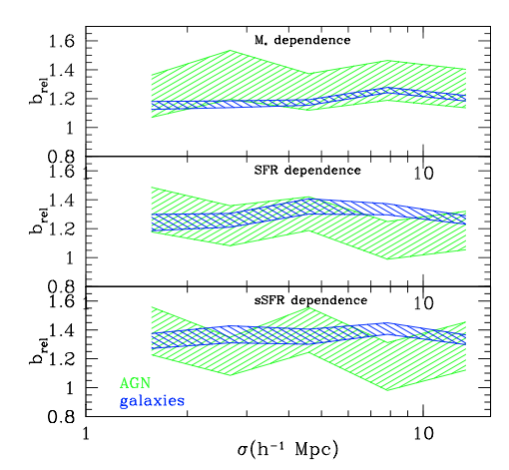
In the last decade there has been growing evidence supporting the coeval growth of galaxies and their resident Supermassive Black Hole (SMBH). However, it is still not clear what are the physical mechanisms that drive the black hole (BH) growth, how the large-scale environment (the mass of their Dark Matter Halo, DMHM) affects these feeding mechanisms and what is the connection between the environment of the SMBH and the host galaxy properties, e.g. Star- Formation Rate (SFR) and stellar mass (M⋆).
Astronomers of the X-ray group of the I.A.A.S.A.R.S, at the National Observatory of Athens, used galaxies observed in X-rays that have an active SMBH at their centre (AGN), from one of the largest contiguous X-ray fields (XMM-XXL). They studied the dependence of their large-scale environment on the host galaxy properties and compared it with galaxies that host inactive SMBHs (Mountrichas, Georgakakis, Georgantopoulos 2019). Their analysis revealed that both active and normal galaxies have a similar dependence on the properties of the host galaxy. Even more importantly, active and normal galaxies seem to live in similar environments. These results suggest, that the activity of the SMBH does not affect its large-scale environment (DMHM) nor its dependence on the host galaxy properties.
Publication: Mountrichas et al. 2019
